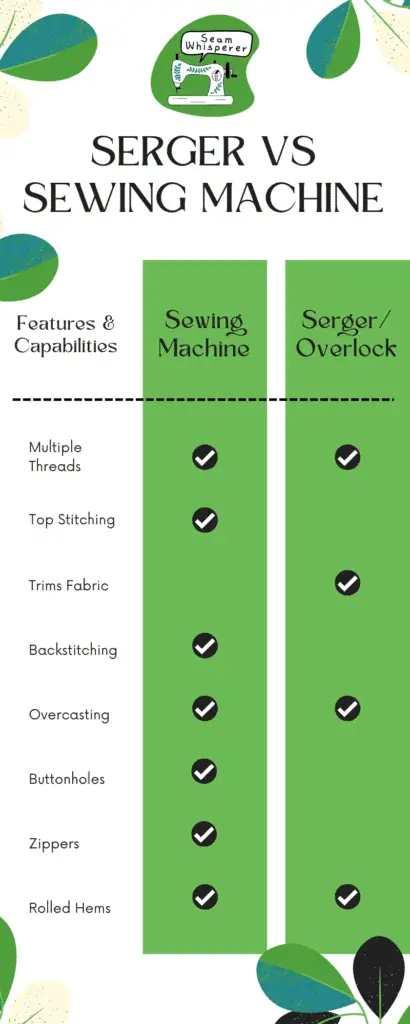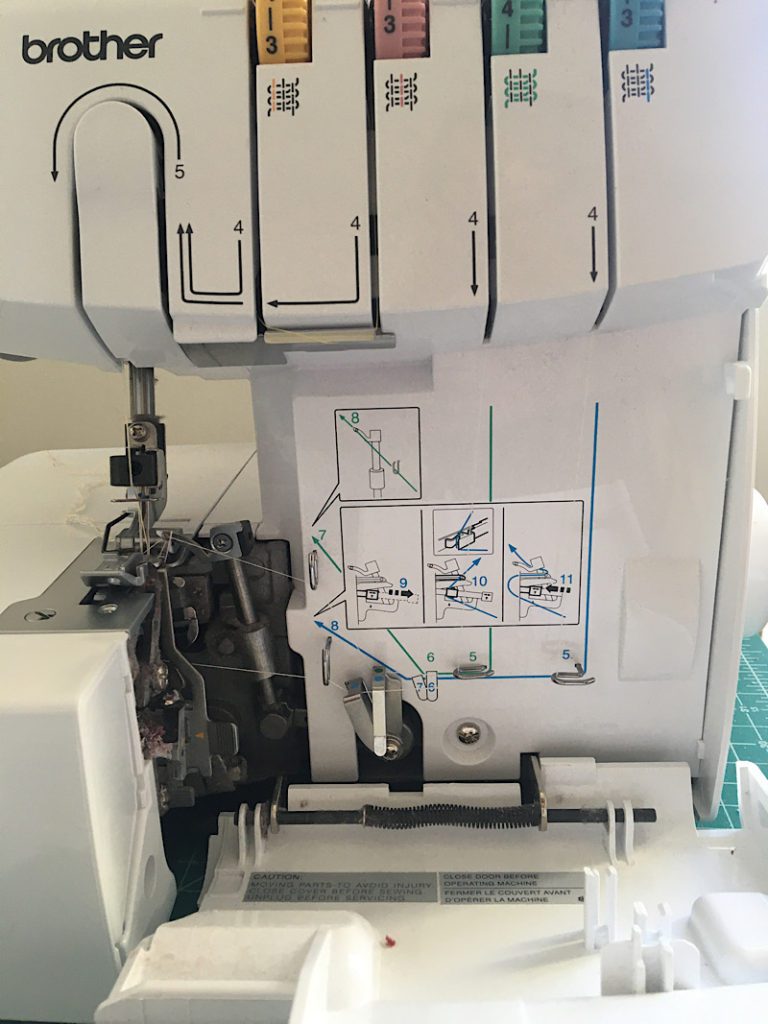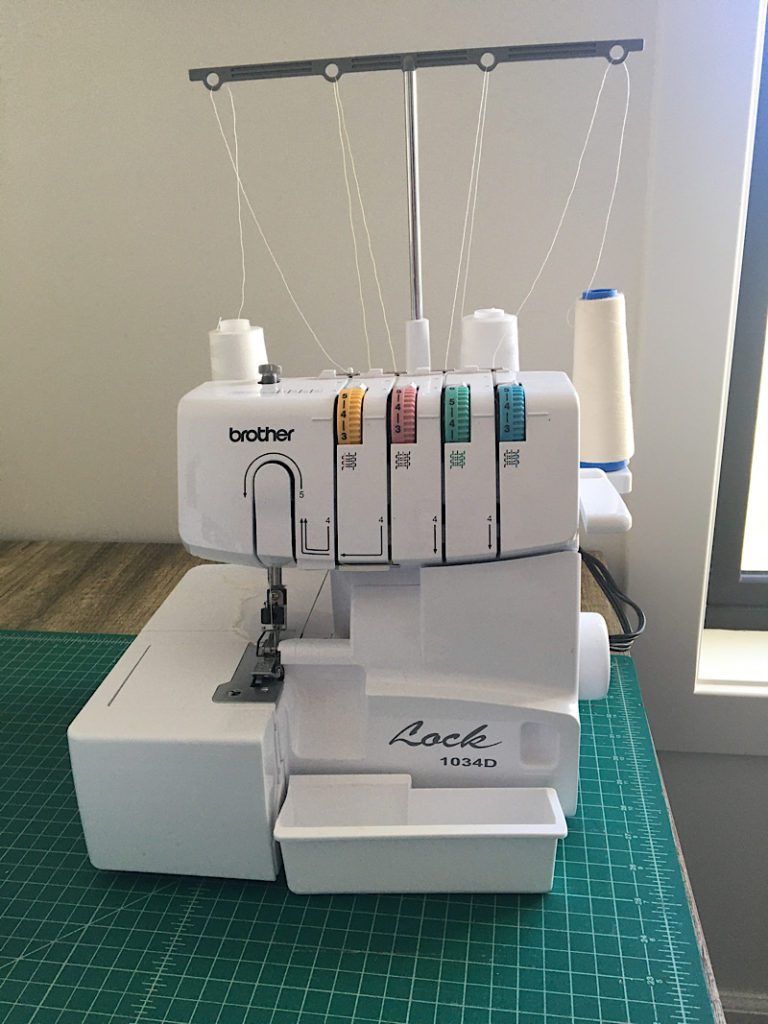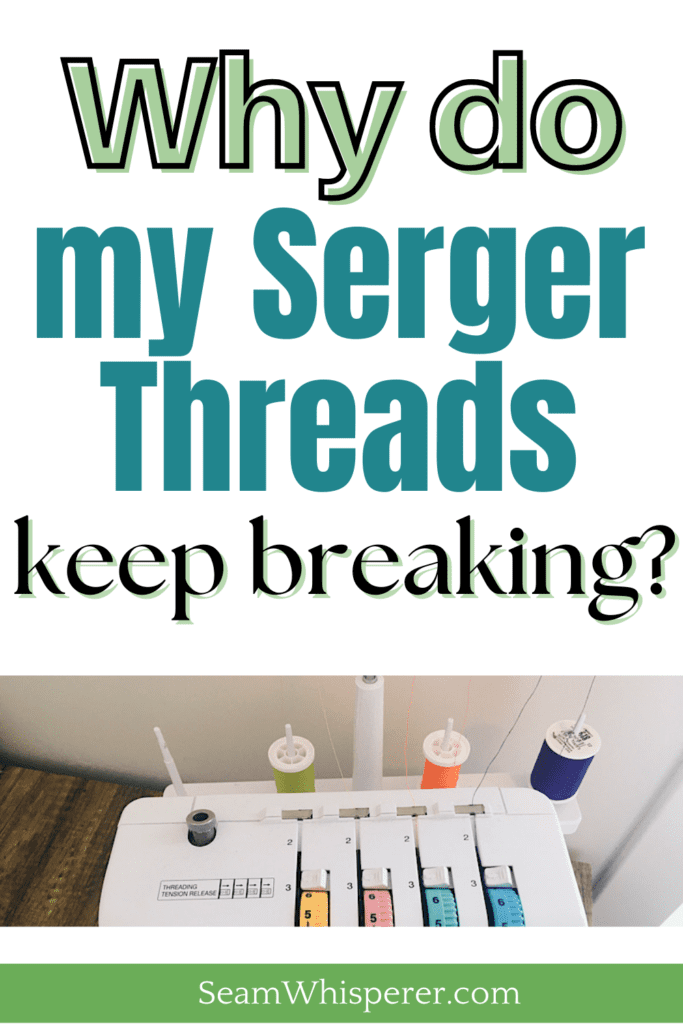Serger or sewing machine… which one do I need? And what’s the difference anyways?
It’s true that sergers and sewing machines are both, well, sewing machines! But their purposes differ and each has capabilities the other does not.
Let’s dive into some of the most common questions about sergers and how they compare with regular sewing machines.
This post may contain affiliate links. Read the full disclosure here.
Serger Vs Sewing Machine (Quick Answer)
The difference between a serger and a sewing machine is that sergers are specialty machines equipped with multiple needles, threads, and a blade that simultaneously trim and encase the edge of your fabric as you sew. Sewing machines cannot trim fabric, and use bobbin threads to make stitches.
Similarities & Differences
Sergers are similar to regular sewing machines in that they are powered by a foot pedal, and use needles and thread to make stitches. However, there are many differences between the machines such as:
- Number of needles
- Number of threads
- Cutting Ability
- Sewing in reverse
- Speed of sewing
- Ease of threading the machine
For those of you who need a quick guide of the differences and similarities between sergers and sewing machines, here is a handy infographic for you to “Pin” and refer to!

Are Sergers And Sewing Machines Interchangeable?
You might want to know if you can interchange a serger and a sewing machine, or if you have to purchase both. There is some nuance to this question.
Can A Serger Be Used As A Sewing Machine?
No, a serger cannot be used in place of a regular sewing machine. Sergers trim fabric as you cut, which makes top stitching impossible. They also cannot sew in reverse, and can only sew a few types of stitches while a sewing machine can sew many.

Although it is possible on many sergers to disengage the blades and sew without trimming your fabric, sergers are intended to sew right along the edge of your material, and thus do not have space on the right side of the needles to sew into the center of the fabric.
Can a Sewing Machine be used as a serger?
Although a sewing machine does not have blades to trim your fabric, you can sew overlock stitches that encase the edge of your fabric with your sewing machine. These stitches are refered to as “Overcasting Stitches”
Some common overcasting stitches on are called the “Zig Zag Stitch” the “Three Point Zig Zag Stitch” as well as several types of general overcasting stitches.

Overcasting stitches are utility stitches that join seams and finish raw edges at the same time, but need to be sewn on material that is already trimmed neatly and straight. These stitches are great for stretchy materials since they stretch with the fabric.
A specialty foot is needed for different overcasting stitches. You can read all about different presser feet and what they do (with photos) in my Presser Foot Guide. (Make sure to grab the free chart!)
Related: 25 Basic Sewing Machine Parts & Their Functions (With Printable Diagram)
Is it worth buying a serger?
For general sewing projects a serger is not a necessary tool. Regular sewing machines are less expensive, easier to thread, and have more capabilities than sergers including a few basic overcasting stitches, buttonhole stitches, and more.
However for experienced sewers who need the speed of a serger, the professionally finished edges, and especially for those who mainly sew with knits and clothing, sergers are a very worthwhile investment.
I mostly sew and alter clothing. You cannot sew clothing with only a serger, but you can sew it with only a sewing machine (although sergers will help them look more professional).
I have owned a serger for many years, and I use it almost daily in my clothing alterations and creations. I love the clean edges and speed in which it runs.
In fact, the Brother 1034d (the serger I use, you can read my review of it here) has a maximum speed of 1300 stitches per minute!
However, because I own a serger, I do not utilize my sewing machine to it’s full potential.
I rarely use the overcasting stitches on my regular sewing machine, in fact most of the decorative and specialty stitches have never been touched! (What a shame to admit, I should try some!)
What is the best serger for beginners?
I have personally tested several Compact overlock machine (serger) models, however I have only ever owned one model, and it meets my needs just fine!
As a home sewer, as well as someone who sews for clients, the machine I use and recommend is the Brother 1034D.

This is a great model for beginners because it is inexpensive, readily available, and easy to learn.
Plus, due to how common this machine is, there are many online resources such as reviews, tutorials, and troubleshooting guides available to help you learn how to use it. (Which is important for us DIY-ers!)
As you can see there are many similarities between a serger and a sewing machine, but the differences that set them apart make a serger a great tool for any home sewer to include in their ‘toolbelt’!
Want to learn how to sew? Take advantage of my free guide on How To Find A Sewing Class Near You! I go over 5 ways to find a local sewing class, plus the 2 alternatives to try if you can’t find one.
[convertkit form=3455715]






Awesome post! The infographic makes it so easy to quickly compare the differences between a serger and a sewing machine. I love how you highlighted the pros and cons of each machine, making it clear which machine is better suited for different types of projects. I found the information on the types of stitches each machine is capable of producing especially helpful. I’ll definitely be referring back to this post when I’m making a decision on which machine to use for my next project. Thank you for sharing this valuable information!
thank you for the article
You are welcome!